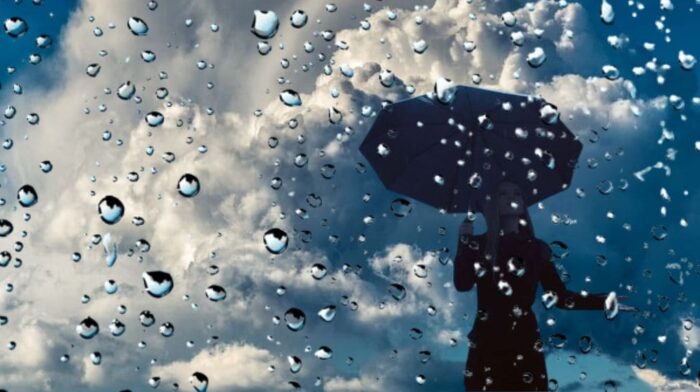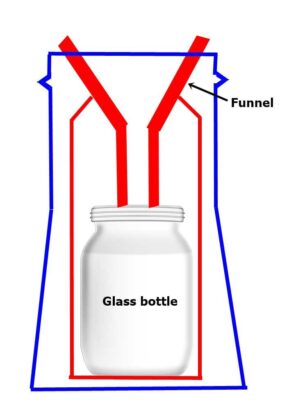It is important to know how weather and climate affect people’s lives. By discussing weather and climate we will learn some terms to know. Every person is more or less interested in weather and climate. Because human life depends on weather and climate. People make their own projects or plans based on weather and climate. So that he can develop his activities to the fullest.
Nowadays people are focusing on studying geography and its preparation. As a result, candidates are participating in the competitive examination without fear. Basic knowledge always enhances practice development skills. So before taking the educational process we must know the basic concepts. So, we can move towards a smart goal.

Then let’s discuss some things about weather and climate. Earth’s special atmospheric elements mean weather and climate. If the weather changes for a short period of time i.e. for 2-3 months, then it can be termed as weather. That means weather is a temporary atmospheric change. And if the weather changes for 2-3 years, then it is permanent atmospheric change. That is the climate. For the change of these two, our agriculture, industrial production, lifestyle all change.
Physical geography focuses on Earth’s weather and climate with answers to GK questions. Can we hope that these basic questions can increase your knowledge power? This is our elementary school. We give grassroots practice tests to students to build their foundation. That is why we want students to present themselves in exams like Geo Genius Olympiad exam. Go ahead with us.
A Few Words About Weather and Climate
Weather
Climate
- Pressure
- Temperature
- Humidity
- Wind
- Sunshine
- Cloud
- Precipitation
Weather forecast
Meteorology
Six’s Maximum and Minimum Thermometer
Diurnal range temperature and annual range of temperature
These liquids easily expand or contract with a rise in temperature or fall in temperature
Thermograph
Stevenson Screen
So, Difference Between Weather and Climate Is?
Weather is the short-term atmospheric condition in a particular place. Like temperature, wind, precipitation etc. On the other hand, the long-term atmospheric condition and average weather of a particular place is called climate.
What Is the Study of Weather and Climate Called in Science?
The science and research done to predict the weather is called meteorology. But, the science through which climate and its various discoveries is called climatology. Climatology even helps to explain the causes of climate change.
What Instruments Measure Weather and Climate?
Alcoholic thermometer, mercury-in-glass, Six’s thermometer are used to measure surface temperature. Barometer can used to measure atmospheric pressure. Air humidity measured using a hygrometer. Likewise, wind speed can measure using an anemometer.
Atmospheric pressure
Barometer
- Aneroid barometer (very handy and have no liquid) and
- Mercury barometer
Millibars (Mb)
Barograph
Due to airflow from a high-pressure area to a low-pressure area
Instruments Used for Measuring Weather and Climate
Wind vane (having arrow point towards wind direction)
Anemometer (measured in knots; I knot = 1 nautical mile/hour)
Anemograph
Absolute humidity (measured in gram/m3)
Relative humidity (shown in percentage)
Dry and wet bulb thermometer
Hygrometer
- Fog
- Dew
- Frost
- Clouds
- Cirrus clouds (high clouds; 6000-12000m; containing ice crystal; dry and rainless clouds)
- Cumulus clouds (medium clouds; 2000-6000m; thick woolly appearance; sharp showers)
- Stratus clouds [above 2000m altitude; dark grey; cause drizzle (very small raindrop)]
- Nimbus clouds (below2000m; thick dark clouds; rain clouds; causes continuous rain)
Precipitation (types- rain, snow, sleet, and hail)
- Convectional rainfall
- Relief rainfall
- Cyclonic rainfall
A rain gauge (reading time fixed for 24 hours)

A Rain Gauge Is Used to Calculate the Amount of Rainfall
Rain gauge consists of a glass bottle, cylinder, and funnel. Rainwater is collected over a jar and measured with the help of a measuring jar.
Why We Measure Weather?
There could be many reasons for this. What was the weather record in the past? How is it going now? Weather measurements are needed to know if there is any warning in the coming days. So, it is important to know what the weather will be like to choose the ideal time to start something.
Weather map (meteorologists use it for weather forecast)
Beaufort Wind Force Scale (1805)
Find the Exact Live Location Map of Any Place
Coriolis Effect [so winds get deflected to their right in the northern hemisphere and to their left in the southern hemisphere (called Ferrel’s Law)]
- The equatorial low-pressure belt (5o N to 5o S)
- The sub-tropical high-pressure belt (30o N & S to 35o N & S)
- The sub-polar low-pressure belt (60o N & S to 65o N & S)
- The polar high-pressure belt (90o N & S)
The point of intersection of a parallel latitude (horizontal line) and a meridian of longitude (vertical line) denotes the exact location of any place.
The exact midway imaginary line is drawn around the earth which divides the earth into two halves (or hemispheres) called a map of the Equator.
Axis (it is at the centre of the earth)
Parallels of latitude (runs in east-west direction)
Meridians of longitude (runs in north-south direction)
Great circles (but, other parallels of latitude are called small circles)
How Latitudes Divide the Spherical Earth
The arc of the Great Circle is the shortest distance between the two points of the spherical earth.
It is the angular distance [ measured in (o)] of that place either north or south of the Equator measured from the centre of the earth.
111 km
The Equator (at 0o)
- Tropic of Cancer (parallel of 231/2o N)
- Tropic of Capricorn (parallel of 231/2oS)
- Arctic Circle (parallel of 661/2oN)
- Antarctic Circle (parallel of 661/2oS)
Heat Zones (These are torrid, temperate, and frigid zones)
Torrid Zone (also called tropical zone)
Weather and climate have a significant role in our daily life. So, we can say the effect of term and climate is different. Among them are agriculture, travel, health and even affect the mind.
See Easy Viral Terms Related to Weather and Climate
In short, we know some key terms of weather and climate. Those are weather, climate, temperature, humidity, precipitation, and wind etc.
Weather: We can call the atmospheric condition of a place at a particular time as weather. The first factors to be calculated here are temperature, humidity, wind speed and direction. And second is clouds and atmospheric pressure. Also, precipitation includes rain, snow, and sleet. So, we can say the weather is sunny, rainy, windy, and cloudy depending on the time.
Climate: The long-term pattern of weather of a particular place termed as climate. This long term should be at least 25 years. Thus, we can determine the climate by judging the average weather condition of a place.
Temperature: The degree of hotness and coldness of the weather is called weather temperature. We can measure this temperature in Fahrenheit (0F) or Celsius scale (0C). Changes in temperature can affect in diet, clothes and increase the chance of disease.
Humidity: The presence of water vapor or amount of moisture in the air means humidity. If there is high humidity, we feel hot i.e. less evaporation of sweat. But, if there is low humidity, we feel cold.
Precipitation: Precipitation refers to the various forms of water that fall from the atmosphere to the surface of the earth. Therefore, these can be snow, sleet, rain, or hail. Precipitation is very important. Through this our ecosystem is maintained. Besides, agriculture and water source are special means of replenishment.
Wind: The movement of air from one end to the other end of the earth is called wind. This is usually due to differences in air temperature and pressure. Wind speed and direction affect transportation. Energy production in this way helps turn turbines. Dispersal of pollutants and airborne disease carry through wind.
How to people activity rich to climate change?
Climate change occurs when global or regional climate patterns change. The main reason is human activities. Humans burn almost all fossil fuels. Also, deforestation and industrial processes cause changes in people’s lifestyles. So, the temperature of the earth is increasing, the ice of the glaciers is melting, the water level of the sea is rising.
So, climate change plays an important role in reality. To live a healthy life, we must be careful. Weather and climate change create distinct perceptions. They complement each other.









